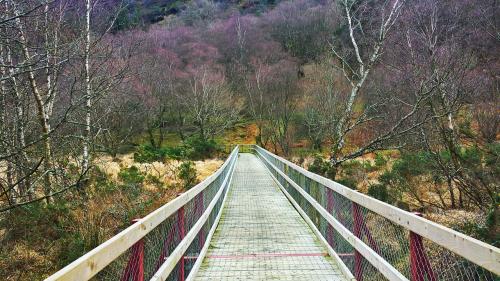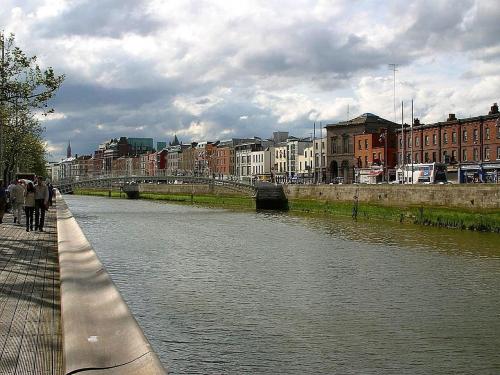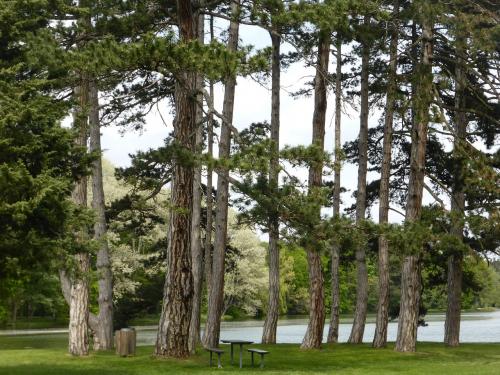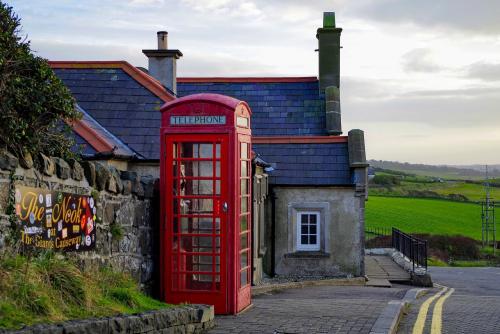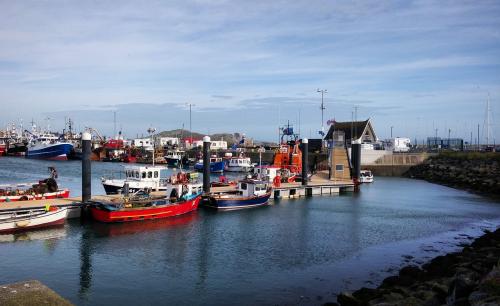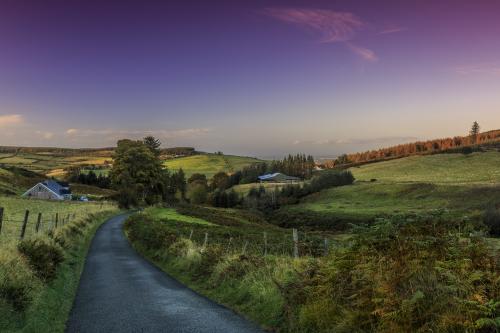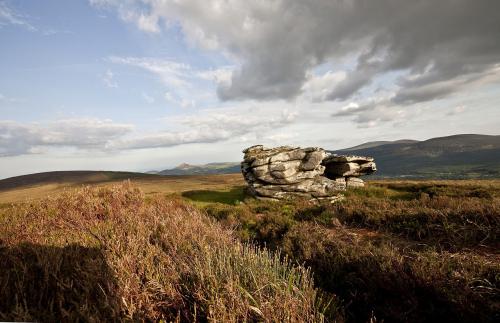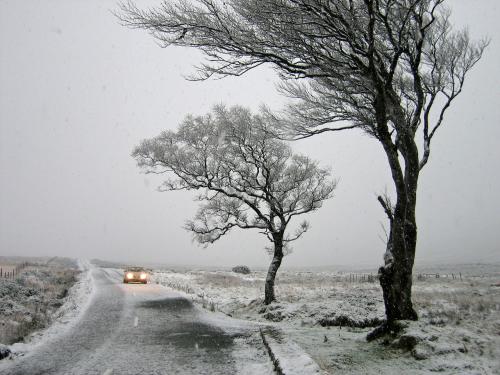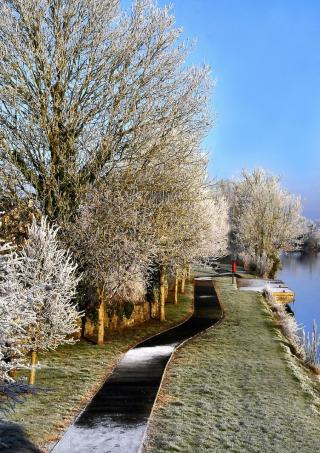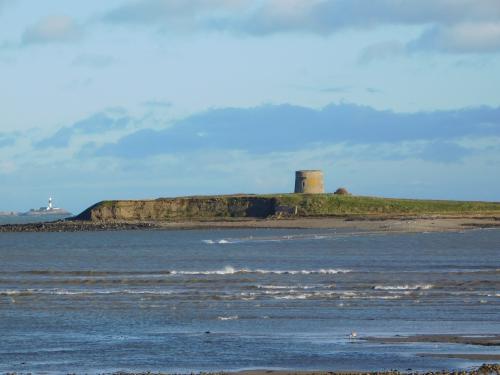Seasons in Ireland
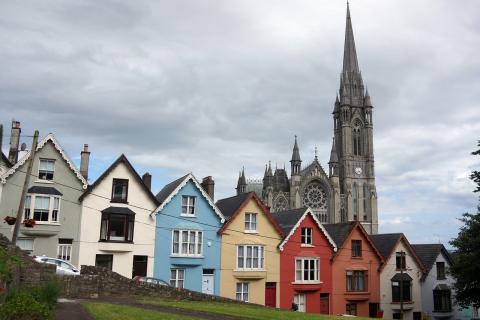
Ireland is a wonderful world of green meadows, rocky "lunar" landscapes, deep lakes and fast flowing rivers. There is a lot of tundra and sub-tropical greenery, plenty of pubs (its total number in the country is more than 11 thousand!) and perfect environment.
This is a land where the grass is green all the year round, and cool Irish guys still threaten not only local girls, but the world cinema. Emerald Isle with evergreen grass and excellent environment, where sheep, but not cars, are the culprits of traffic jams, attracts many tourists every year.
It’s a place where the tender edelweiss peacefully coexists with tropical palm trees. Ireland is a country of pacifying rural landscapes, where lots of surprises await for you at every step.
Seasons
Contents:
Spring in Ireland
Ireland in spring is as pretty as a marriageable girl. It is the most favorite time of the year among locals. Lots of spring holidays prove this opinion. St. Patrick's Day is one of the most important holidays for Irish. They celebrate in on the 17th of March.
Fortunately, the holiday has lost its religious roots, and is celebrated by all the country's inhabitants regardless of religion.
In spring meadows, swampy plains and valleys are covered with the emerald greenery. Heavy rains rather quickly replaced by the sun with a rainbow. The Irish have learned to enjoy short spring moments, because the warm sunny day could be broken by cold wind and rain at any moment. It is a character of the local climate, and unfortunately nobody can change it.
Climate of the Spring Months
| March Max average t°: +10 °C (50 °F) Min average t°: +3 °C (37.4 °F) Sundial in the day: 3 hours Rainy days: 10 days Precipitation: 50 mm (1.9") |
| April Max average t°: +13 °C (55.4 °F) Min average t°: +4 °C (39.2 °F) Sundial in the day: 5 hours Rainy days: 11 days Precipitation: 45 mm (1.7") |
| May Max average t°: +15 °C (59 °F) Min average t°: +6 °C (42.8 °F) Sundial in the day: 6 hours Rainy days: 10 days Precipitation: 60 mm (2.3") |
(Dublin)
Spring Holidays
Easter Monday belongs to the national spring holidays. It is celebrated on the first Monday after Easter.
March 8th is an International Women's Day.
March equinox is an unusual holiday which is celebrated on 20th of March.
People celebrate May Holiday on the first Monday of May.
They also celebrate Good Friday on the last Friday before Easter. It is a national holiday, that’s why the Irish don’t work and spend all the day with their families.
Easter is also a spring religious holiday which is usually celebrated in April or May.
Summer in Ireland
Ireland is an ideal place for people who don’t like hot summer, because the average temperature in July doesn’t exceed +20 °C (68 °F). Cool summer is the main feature of this area. Plants and flowers are blooming luxuriantly in six national parks of the country during this period. Gardens and trees are also blossoming on the territory of the old castles in the remote provinces of Ireland. Even Paul McCartney got married in one of them in his time. He has celebrated the wedding in this beautiful country.
Flora and fauna are extremely rich in Ireland. The blackbird, the chaffinch, the blue tit, the kestrel, the swift, the wren, the zarnyaka ... When was the last time you saw these birds, for example, in Moscow or its suburbs? If you want to behold them, you should go to the foothills of Kerry.
Climate of the Summer Months
| June Max average t°: +18 °C (64.4 °F) Min average t°: +9 °C (48.2 °F) Sundial in the day: 6 hours Rainy days: 11 days Precipitation: 55 mm (2.1") |
| July Max average t°: +20 °C (68 °F) Min average t°: +11 °C (51.8 °F) Sundial in the day: 5 hours Rainy days: 13 days Precipitation: 70 mm (2.7") |
| August Max average t°: +19 °C (66.2 °F) Min average t°: +11 °C (51.8 °F) Sundial in the day: 5 hours Rainy days: 12 days Precipitation: 75 mm (2.9") |
(Dublin)
Summer Holidays
Just hurry up, because any sunny day can end with drizzling rain even in the summer.
June Bank Holiday is celebrated on the first Monday of June.
June Solstice is a season holiday. The Irish celebrate it on the 20th of June.
The anniversary of Cath na Bóinne is on the 12th of July (Northern Ireland).
La Lunassa is on the 1st of August.
The Irish celebrate August Bank Holiday on the first Monday of August.
Notting Hill Carnival is on the last Sunday of August.
Autumn in Ireland
Autumn in Ireland is the harvest time. But also you can take a break from work, numerous events and festivals. Every year plenty of tourists from different countries visit the Oyster Festival, the Jazz Festival and Blues Festival in Ireland.
Perfect environment of the country is characterized by its evergreen emerald of meadows and lawns in front of the government offices even in late autumn. You can also see this color on all planes of the national airline, public buses and school uniforms of local pupils. Most of the houses in respectable parts of Dublin are ivy-covered even in January.
But that's not all ... Even if you leave the capital of the country and go to any province, emerald Ireland will remind of itself by a green uniform of postal workers, echoes with the color of pastures, where many herds of sheep and cows usually graze.
Climate of the Autumn Months
| September Max average t°: +17 °C (62.6 °F) Min average t°: +9 °C (48.2 °F) Sundial in the day: 4 hours Rainy days: 12 days Precipitation: 70mm (2.7") |
| October Max average t°: +14 °C (57.2 °F) Min average t°: +6 °C (42.8 °F) Sundial in the day: 3 hours Rainy days: 11 days Precipitation: 70 mm (2.7") |
| November Max average t°: +10 °C (50 °F) Min average t°: +4 °C (39.2 °F) Sundial in the day: 2 hours Rainy days: 12 days Precipitation: 65 mm (2.5") |
(Dublin)
Autumn Holidays
September equinox is a season holiday. The Irish celebrate it on the 22nd of September.
October Bank Holiday is usually celebrated on the first Monday of October.
Samhain (Halloween) is on the 31st of October.
The Irish usually celebrate Cracker Night on the 5th of November.
Winter in Ireland
Strange and yet very true, winter is the driest period of the year in Ireland. It’s an ideal time for those people, who want to get acquainted with Ireland without umbrellas or hoods, which obscure eyes of the curious travelers.
Snow rarely falls. It doesn’t stays for long time, because winter in Ireland isn’t as cold. The lowest temperature (-19 °C) was registered almost 150 years ago and it has not been repeated since then.
The Irish love their winter and know how to celebrate New Year’s Day. They celebrate it on the 1st of January. It is one of the most popular national holidays among ordinary people. Streets and squares of the cities and towns are crowded with people. They open the doors of their houses to all passers-by and everybody can drink a cup of hot mulled wine, hear plenty of sincere wishes and spend a few minutes talking with a hospitable owner of the house.
Climate of the Winter Months
| December Max average t°: +8 °C (46.4 °F) Min average t°: +3 °C (37.4 °F) Sundial in the day: 2 hours Rainy days: 14 days Precipitation: 75 mm (2.9") |
| January Max average t°: +8 °C (46.4 °F) Min average t°: +1 °C (33.8 °F) Sundial in the day: 2 hours Rainy days: 13 days Precipitation: 65 mm (2.5") |
| February Max average t°: +8 °C (46.4 °F) Min average t°: +2 °C (35.6 °F) Sundial in the day: 3 hours Rainy days: 13 days Precipitation: 65 mm (2.5") |
(Dublin)
Winter Holidays
St. Nicholas Day is on the 6th of December.
December Solstice is a season holiday which is usually celebrated on the 21st of December.
Christmas Eve belongs to the religious holidays. The Irish celebrate it at night before Christmas.
Christmas Day is one of the most popular winter holidays. They celebrate it on the 25th of December. Oh the next day St. Stephen’s Day is celebrated.
New Year's Eve is a celebrated on the 31st of December.
St. Brigit is on the 1st of February.
 Seasons of the Year
Seasons of the Year 